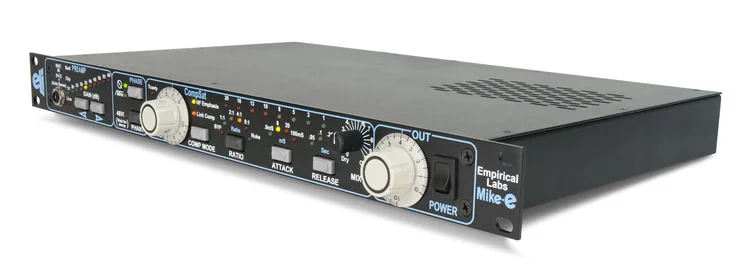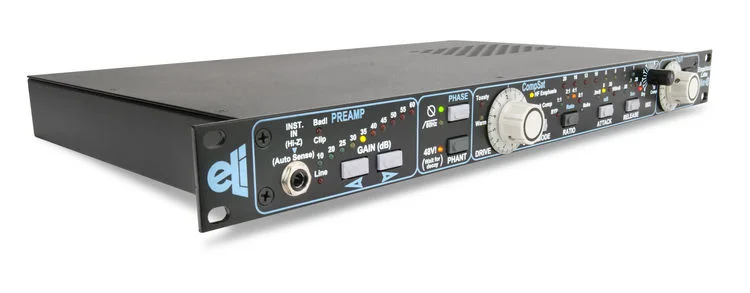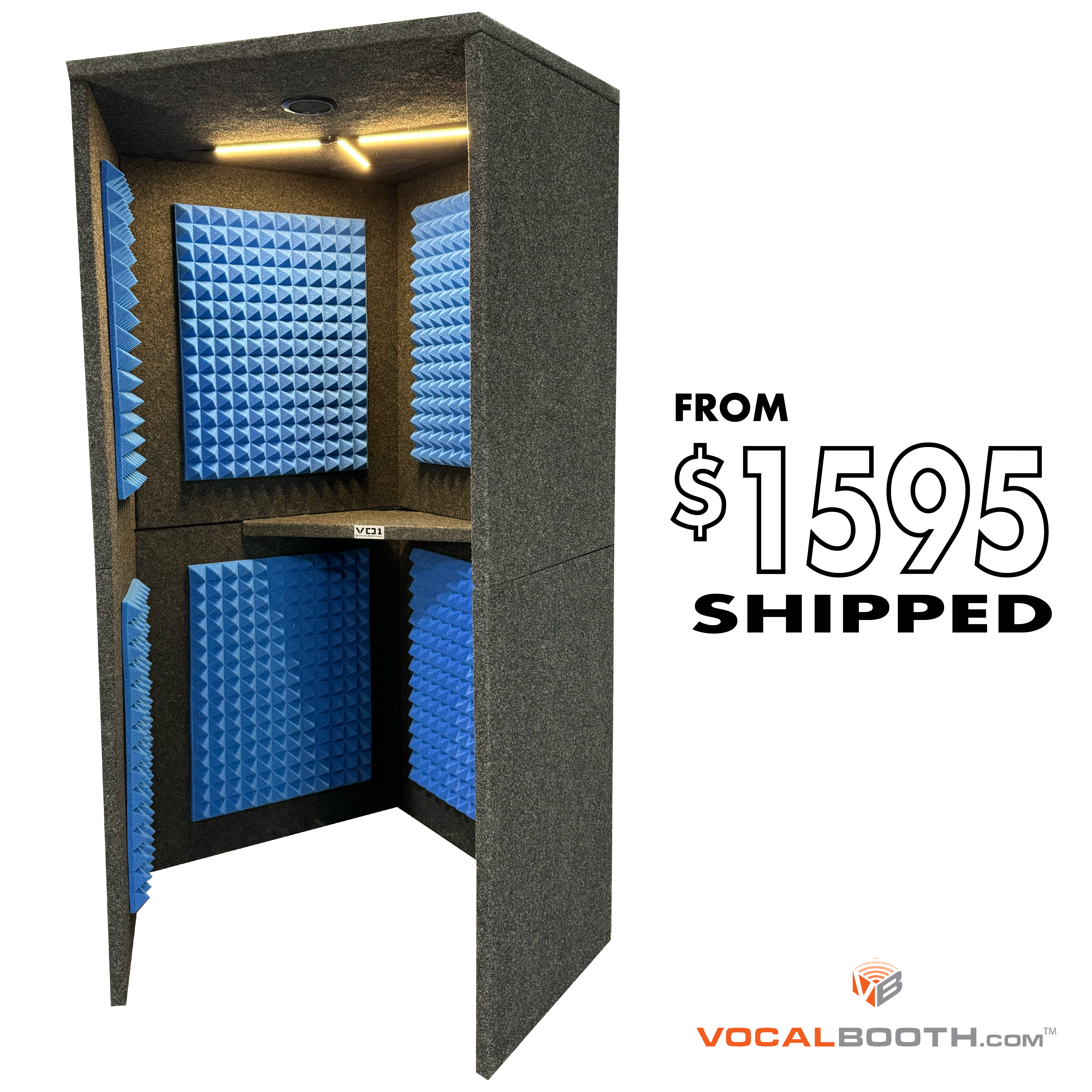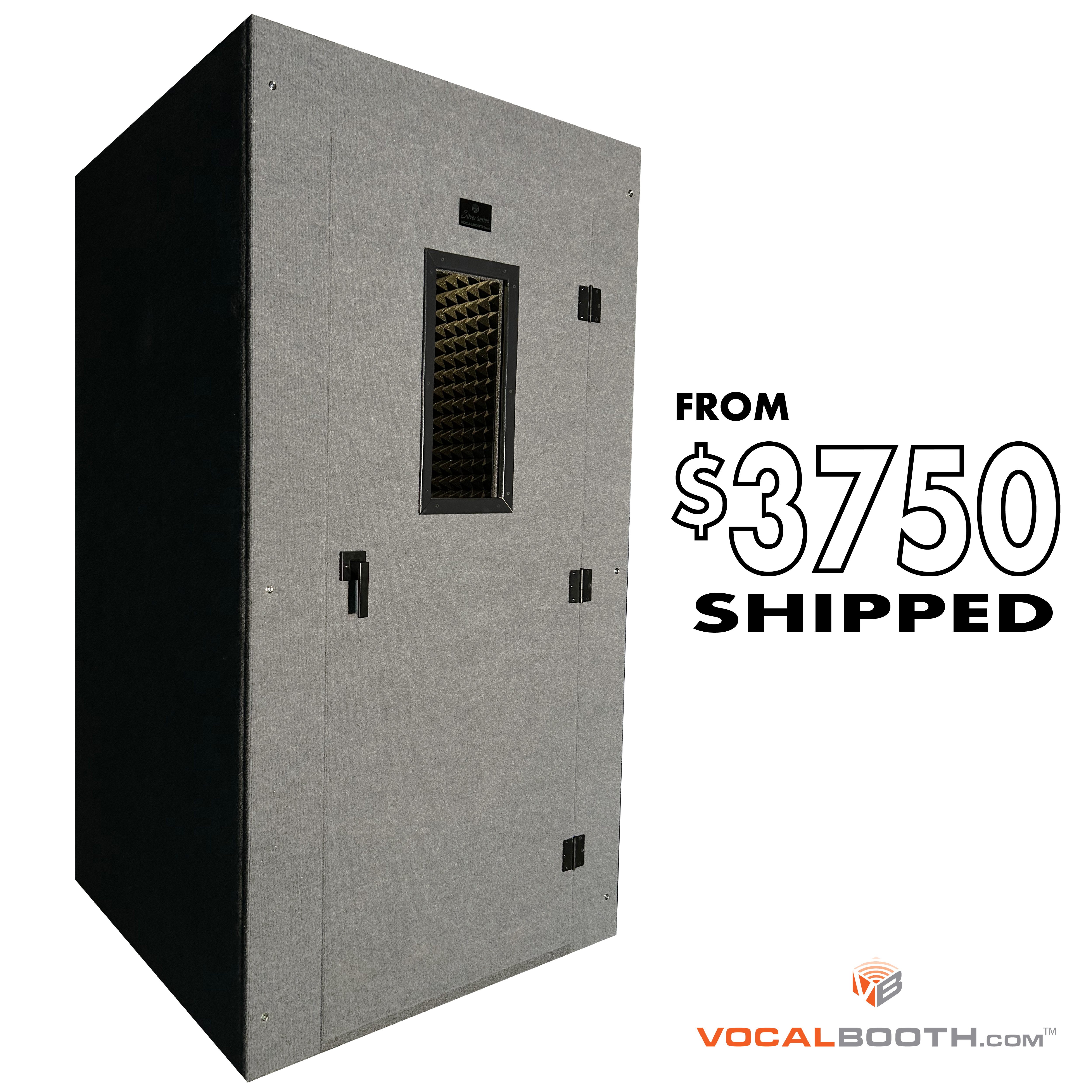Empirical Labs’ Mike-E channel strip manages to do many things very well! First and foremost, it’s a modern digitally controlled mic preamp. An extremely low-noise transformer on the input amplifier keeps the signal strong and clean. The input section also features a high-performance DI for direct-input instruments such as guitar and bass. Polarity, highpass filter, and 48V phantom power switches come next, followed by the CompSat section, which is comprised of a Saturator, Compressor, Emphasis, and Mix Control. These four circuits come together in the Empirical Labs Mike-E to enhance your tracks with everything from classic knee compression and limiting to colorful vintage-style saturation. On its rear panel, Mike-E features balanced and unbalanced I/O, as well as sidechain input and stereo link jacks. Empirical Labs’ Mike-E is very well-spec’d and equipped, indeed, and at its quite reasonable price point, an excellent value!
Related Videos: EL-9 Mike-E Microphone Preamp & Compressor
A truly impressive mic pre
Mike-E is above all a fine example of what a great preamp should be, packed with unusual features to warm and soften the source, along with an excellent compressor/limiter to punch it up. Mike-E offers incredible performance via its Lundahl transformer-coupled mic preamp, whose noise floor is far below any microphone’s self noise. The super-low-noise input amplifier section features gain that is digitally controlled.
Mike-E’s signal-to-noise spec exceeds any microphone’s — nominally above 130dB with 40dB of gain. Having used many mic preamps over the years, engineers at Sweetwater appreciate Empirical Labs’ implementation of a unique stepped gain control designed to resist the degradation that typically affects older detented switches and potentiometers. A healthy 74dB of gain (including the unit’s 14dB of output gain) is available with the CompSat section bypassed, more than enough to handle any microphone in your collection — even passive ribbons. Of course, 48-volt phantom power is provided for your condenser mics.




Unique compressor section
The one-of-a-kind Mike-E “CompSat” section is an innovative compression and saturation circuit that offers versatile coloration and classic knee compression. The exclusive CompSat section sets the Mike-E apart from all other mic preamplifiers. It is comprised of four sections:
Saturator: This is a multi-stage soft clipping circuit. At lower levels, a triode type saturation affects the signal. As the level increases, a second unique clip circuit that includes Germanium semiconductors starts to more severely flatten out the peaks. An LED labeled BAD! lights up to warn of harder non-musical clipping.
Compressor: This is an uncompromising compressor/limiter circuit that allows detented control of attack and release for easy, reliable settings recall. You adjust the amount of compression with the Drive knob, which adjusts the level going into the compressor. In some ways, it is quite Distressor-like, but it has other differing characteristics, including a much longer available attack time and additional circuitry. Four ratios are provided, 2:1 being the gentlest with a long 20dB knee, good for subtle compression while tracking or strapped across a mix bus. Ratios 4:1 and 8:1 are steeper but still very smooth with long knees. Nuke is very steep (limiter-like) and has a different attack and release shape.
Emphasis: The Emphasis circuit tames high-frequency “pile-ups” and provides frequency-dependent saturation, further enhancing the creamy coloration of the Mike-E. It actually consists of two circuits that surround the CompSat. Pre-emphasis boosts the high frequencies prior to the compressor and saturator, while de-emphasis cuts those frequencies after the CompSat. Emphasis has the added advantage of improving signal-to-noise. (This is the reason analog tape decks used emphasis).
Mix Control: The modern recording engineer often employs the technique of mixing between the compressed and the uncompressed (dry) signal. This “parallel processing” can often help maintain transients and a sense of dynamic range while enhancing the low level nuances. Mike-E has an onboard Mix control to mix in the uncompressed signal with the compressed signal.
Sidechain input for creative ducking
Every dynamics processor has a sidechain circuit that examines the signal and determines how much the VCA will reduce gain — but not every unit provides access to its sidechain. In compressors without a separate sidechain input, your main input signal is, essentially, compressing itself. With compressors that have a separate sidechain input — like the Empirical Labs Mike-E — you can introduce a different signal that determines the compression action on the main signal to achieve everything from “pumping” effects to auto-ducking music under a voiceover, as is common in radio commercials.


Empirical Labs Mike-E Channel Strip Features:
- Mic preamplifier with super low noise and stepped gain
- Highest-quality components used throughout
- High-performance DI for direct-input instruments
- “Colored” 80Hz highpass filter emulates the warm low-frequency cut of vintage equalizers
- Polarity switch inverts audio signal 180 degrees
- CompSat offers both a musical Compressor/Limiter and a unique tape-like saturation circuit
- Emphasis: high-frequency emphasis system softens high-frequency pile-ups and adds color enhancement
- Mix Control allows the blending of the Compressed/Saturated signal with the unprocessed dry signal
- Frequency Response: 3Hz–200kHz on (CompSat out); 3Hz–150kHz (CompSat in)
- Signal to Noise:130dB (40dB gain)
- Maximum output: +28dBu
- Distortion: .0006%–15% (depending on mode and settings
- Input Impedance: 600 ohms; Output impedance: < 38 ohms
























